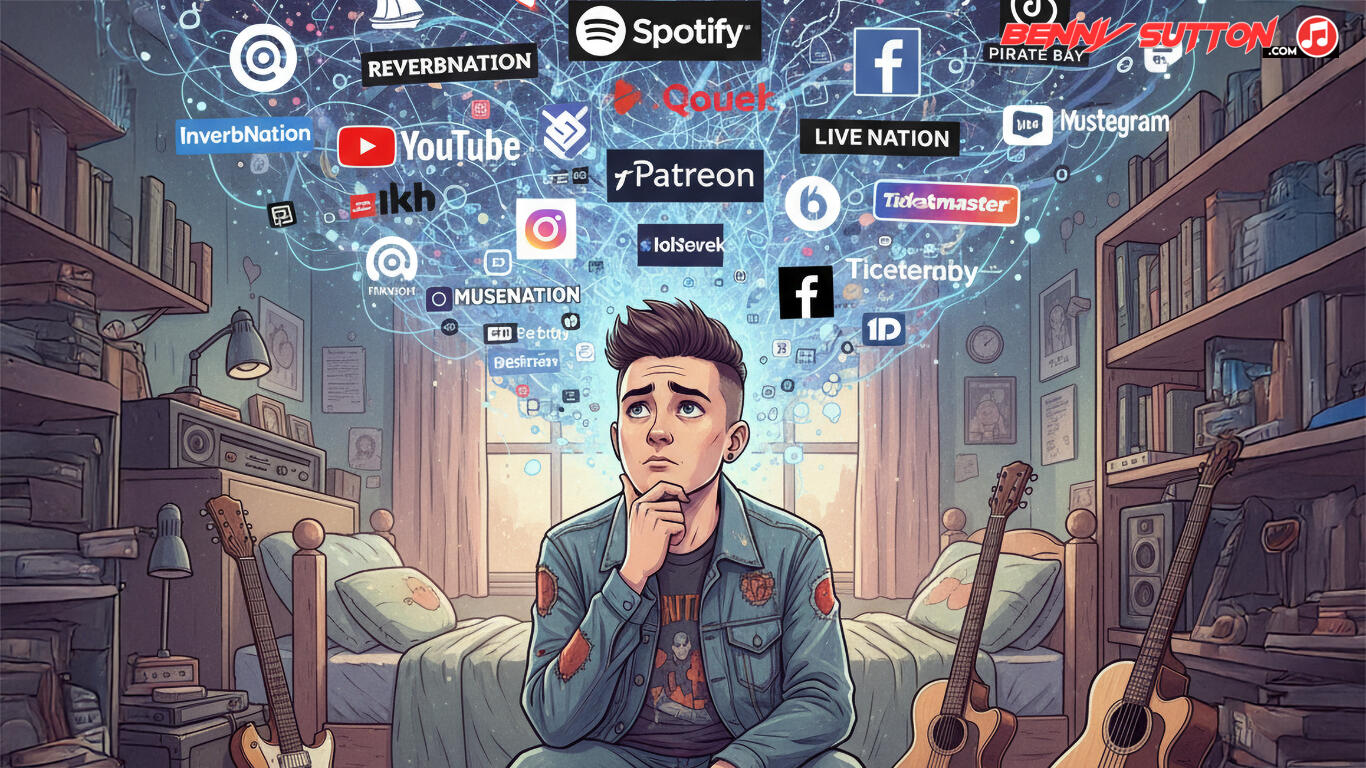Soundtrap is a cloud-based digital audio workstation (DAW) owned by Spotify, designed for online recording, collaboration, and education. It allows musicians, producers, podcasters, and educators to create and edit projects directly in a web browser without needing local software installation.
1. Overview
Soundtrap bridges the gap between professional music production and collaborative online workflow, offering features such as real-time co-editing, MIDI and audio recording, loops, automation, and cloud storage. It integrates seamlessly with Spotify, making it a convenient creation tool for artists within that ecosystem.
2. Audience & Demographics
| Metric | Insight |
|---|---|
| User Base (2024 est.) | ~10 million active creators |
| Top Regions | US, UK, India, Brazil, Germany |
| Core Users | Independent artists, producers, students, podcasters |
| Education Market | Widely adopted in schools and music programs |
| Unique Advantage | Browser-based collaboration and Spotify integration |
Soundtrap attracts collaborative creators and educational users—its accessibility makes it ideal for global co-writing and demo creation.
3. Role in the Music Platform Mix
| Function | Role |
|---|---|
| Discovery | Low — it’s a creation platform, not distribution |
| Engagement | High — real-time co-creation and social sharing |
| Monetization | Indirect — facilitates content that can later be distributed |
| Branding | Demonstrates creativity and community collaboration |
| Networking | Enables co-writing sessions, remote production, and classroom interaction |
Soundtrap complements distribution platforms by enabling creation and pre-production, feeding the pipeline that later reaches DSPs like Spotify and Deezer.
4. How Musicians Use It
- Record, arrange, and mix directly in the browser using built-in instruments, loops, and effects.
- Invite collaborators via share links for real-time or asynchronous sessions.
- Export stems or final mixes to your DAW or distributor for release.
- Use Soundtrap Capture App for mobile sketching and lyric ideas.
- Sync projects with Spotify to release podcasts or demos through the same account ecosystem.
- Teachers and coaches use Soundtrap for Education to host remote music classes and workshops.
5. Marketing & Growth Strategies
| Strategy | Description | Why It Works |
|---|---|---|
| Cross-genre collaboration | Work with creators worldwide | Expands style diversity and exposure |
| Behind-the-scenes content | Share session clips on social media | Builds transparency and fan interest |
| Community remixing | Invite remixes of stems via Soundtrap links | Drives engagement and crowdsourced creativity |
| Educational partnerships | Offer workshops or online classes | Enhances brand authority |
| Integrate with Spotify | Export and publish directly | Streamlines the demo-to-release path |
Soundtrap’s collaborative features double as marketing opportunities—shared sessions often spark new fan communities and remix culture.
6. Monetization
| Source | Method | Notes |
|---|---|---|
| Subscription tiers | Creator, Music Maker, and Complete plans | Unlock advanced features and sounds |
| Indirect income | Sell resulting tracks via distributors | Soundtrap is the creation step |
| Education packages | Institutional licenses | Passive revenue for educators |
| Brand partnerships | Sponsored sessions and workshops | Expands visibility for artists and producers |
Revenue from Soundtrap comes from the content created, not within the platform—its role is creative enablement rather than commerce.
7. Etiquette & Risks
| Do | Don’t |
|---|---|
| Keep project titles organized and descriptive | Overwrite shared sessions without consent |
| Use royalty-free loops responsibly | Assume all public loops are cleared for commercial use |
| Communicate clearly with collaborators | Ignore version control and lose edits |
| Export backups regularly | Rely solely on cloud saves for critical sessions |
| Observe privacy and IP rights | Share collaborators’ work without permission |
Respecting creative ownership and maintaining version control are key to professional collaboration.
8. Example Success Stories
| Artist / Use Case | Approach | Result |
|---|---|---|
| Bedroom producers | Remote collabs during lockdowns | Completed EPs released on Spotify |
| Music educators | Used Soundtrap for online classes | Enabled real-time learning and grading |
| Podcasters | Multi-user audio editing workflow | Smooth publication pipeline to Spotify |
| Indie artists | Shared project stems for remix competitions | Expanded fan engagement and content reach |
9. Summary & Integration Tips
Soundtrap is the collaborative creation engine of the modern musician’s toolkit. Use it to:
- Develop and refine demos with collaborators anywhere in the world
- Build educational or mentoring programs
- Export professional-quality audio directly for release or sync projects
When paired with Spotify (distribution), BandLab or Splice (sampling), and Patreon (fan support), Soundtrap occupies the creative core of your platform ecosystem — where ideas originate before they enter the global marketplace.
